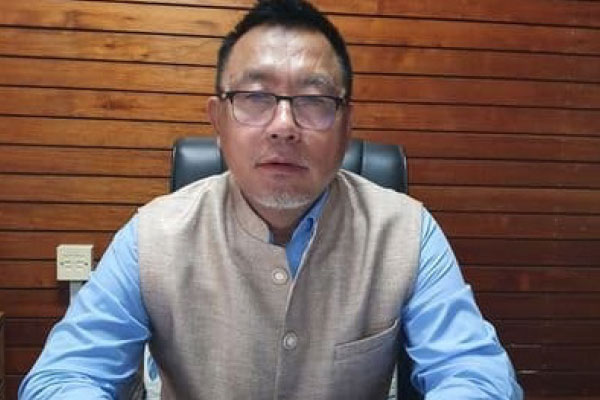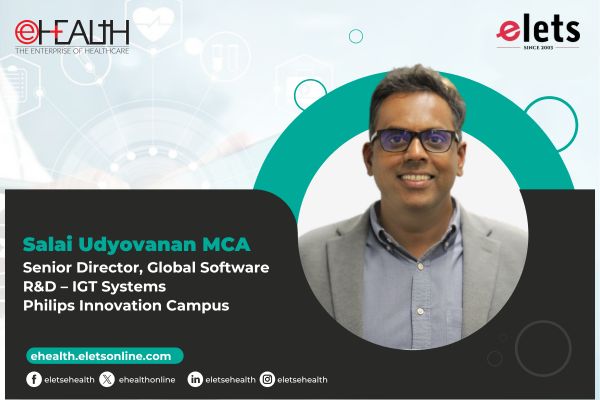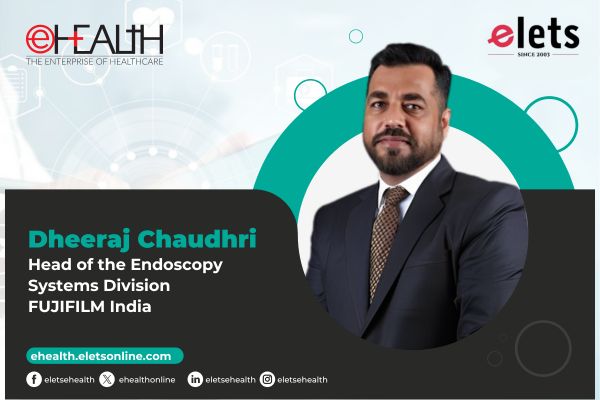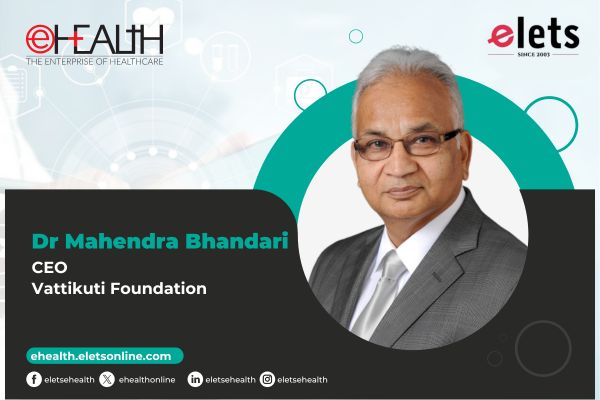
Despite challenges due to connectivity, geographical barriers and health seeking behavior, the State government is leaving no stone unturned to improve healthcare delivery system, enabling people accessible and affordable patient care. Through lots of policy measures coupled with technological advancement, the State is making giant leap in delivery of clinical outcome, says S. Pangnyu Phom, Minister of Health & Family Welfare, Government of Nagaland, in conversation with Nisha Samant and Mukul Kumar Mishra of Elets News Network (ENN).
Q How do you analyse healthcare delivery system of Nagaland in terms of quality and Affordability?

Nagaland has registered significant health progress over recent decades. The state has the lowest Infant mortality rate (IMR) in the country at 7 per 1000 live birth as per SRS May 2019. The State has improved its performance in the State ranking on TB Control Programme from 18th position in 2018 to 12th in 2019 in the country.

Similarly, under Vector Borne Control Programme, incidence of Malaria has reduced from 113 in 2018 to 20 this year with no cases reported from 3 districts and placing the State in Category 1 which Annual Parasitic Incidence at less than 1.

The Pungro Town becomes the first free malaria Town in the State. In addition, a total of 196 schools, 24 colleges and 3 villages have been declared Tobacco Free. The state has adequate health facilities as per our population (11 District Hospitals, 21 CHC, 126 PHC, 396 SC, 2 TB The Pungro Town becomes the first free malaria Town in the State. In Hospitals and 1 Mental Hospital) but accessibility becomes difficult due to bad connectivity and scattered population over difficult terrains especially in rural areas., a total of 196 schools, 24 colleges and 3 villages have been declared Tobacco Free. The state has adequate health facilities as per our population (11 District Hospitals, 21 CHC, 126 PHC, 396 SC, 2 TB

Other than major cities like Kohima and Dimapur, all other districts heavily rely on the public health system which the state Government is continuously trying to improve and upgrade, keeping in minds the changing epidemiological trends. The state is continuously upgrading treatment guidelines and other standards of care based on the latest guideline from the Ministry of Health and Family Welfare, Government of India.
Best affordable services are being provided to every citizen irrespective of social status, class or gender. Besides regular Performance Reviews at various levels, the department has taken up the following initiatives:
a. To promote cleanliness and enhance the quality of public health facilities. Awards to best District Hospitals, Community Health Centres and Primary Health Centre have been initiated under Kayakalp under the umbrella of Swachh Bharat Abhiyan introduced by the Prime Minister of India on 2nd of October, 2014. Every year Best Health Facility is awarded to one District Hospital and one Community Health Centres in the State and One Primary Health Centre in every district.
b. Healthcare services being delivered should not only be judged by its technical quality but also from the perspective of service seekers. The sustainable quality in public health facilities requires an inbuilt quality management system within the health institution along with ownership by the providers working in the facility to the effective actions for traversing the gaps, periodic assessment and improving the quality standards. To this effect, the department has adopted the National Quality Assurance Standards and has actively implemented starting with the District Hospitals.
c. As committed to provide quality and accessible maternal and child health services to every beneficiary coming to public health facilities, several interventions and programmes aids such as Maternal and Neonatal Health Toolkit, Standardization Guidelines for Labour Room, Dakshata, guidelines on maternal and child death review, establishment of skill labs, etc have been adopted. Further, the department has launched ‘LaQshya’ initiative to fast track the interventions for achieving tangible result by strengthening key processes related to Labour Room and Maternity Operation Theatre.
d. Communitisation of Public Institutions and Services: The State government recognizing the need for Community Participation is a fundamental requirement to achieve health and sustainable development, initiated measures to harness its rich social capital to vitalise the public institutions by launching the “Communitization Policy” with the enactment of Nagaland Communitisation of public institutions and services Act in 2002.
Unlike other form of decentralisation or privatisation, in the unique concept of Communitization partnership between government and the people is developed through delegation of powers and responsibilities to the community for management of public institutions so that performance of the public utilities improve.
The communitsation of health sector means the community takes over ownership and management of health institutions and services. It also means active participation of community in preventive and promotive measures, contributing their share to make health a reality in their own community.
Ownership of the health centres by way of monitoring the functioning of the health unit including the attendance of the staff, provision of medicines, maintenance of the health centre building, contribution in cash and kind.
The communitization policy resulted in strengthening and revitalization of the dismal health system in the State. The venture paid off with Nagaland been selected for United Nations Public Service Awards in 2008 for communitization programme in recognition of its innovative use of rich social capital.
e. Feedback from the client is continuously monitored and analysed through platforms like Kayakalp, Quality Assurance, Mera Aspataal etc to ensure patient satisfaction.
f. With aim to promote affordability and access to quality healthcare services and to mitigate the risk of impoverishment due to hospitalization expenses, the state has launched several initiatives such as- Janani Shishu Suraksha Karyakram (JSSK), an initiative to ensure free services to pregnant women and sick neonates accessing Public Health Institutions, Free Drugs and Diagnostic services etc. Further, with the launching of Ayushman Bharat- Pradhan Mantri Jan Arogya Yojna (ABPMJAY), hospitalization expenses of 7,438 beneficiaries worth Rs 9 crore have been paid to various empanelled hospitals by the State as on 8th Jan 2020. Through this social safeguard scheme, the risk of impoverishment of 7,438 beneficiaries, amounting to Rs 9 crores have been mitigated.
Q Give a brief account of recent initiatives undertaken to improve patients care in rural areas.
Delivery of health services in the rural areas has always been a challenge due to connectivity, geographical barriers and health seeking behavior.
a. In addition to the above mentioned activities, under the Prime Minister’s initiative of Ayushman Bharat umbrella, the state is committed to convert all health sub centres and PHCs into health and wellness centres by additional posting of one Community Health Officer (CHOs) in all these facilities in tune with the global call to improve delivery of comprehensive primary healthcare.
b. In the recent past, 165 Sub- Health Centre, 16 Primary Health Centres and 7 Community Health Centres have been created/ upgraded to promote accessibility to healthcare services in remote areas.
c. To reach all villages, the state is also pushing to revitalise VHNDs/ Village health sanitation and nutrition days in convergence with allied departments like PMMVY and Poshan Abhiyan under Social Welfare, NRLM under Rural Development, school education, PHED etc.
d. To improve health seeking behavior and awareness around health, the state is partnering with civil societies and the churches on a mission mode especially on Immunization, ANC etc.
e. Pradhan Mantri Bhartiya Janaushadhi Pariyojana (PMBJP): To make quality generic medicines available at affordable prices for all, the department has set up Pradhan Mantri Bhartiya Janaushadhi Kendra (PMBJK) is all District Hospitals.
f. To promote prompt and timely access to healthcare, the department has placed 80 Ambulances are in place for Referral Transport of serious patients.
g. Introduction of Roster Posting linked with Career Progression for doctors. To ensure availability of doctors in remote and difficult areas and to provide equal opportunity to all members of In- Services Doctors, the department has formulated Roster Posting liking with career progression.
Q Infrastructure has always been an obstacle in the delivery of care…how PPP model has been leverage to improve things in Government hospitals?
For strengthening the public sector health system and meeting public health goals, the State government is actively developing partnership with non-governmental sector to bring in much needed resources to ensure a reasonable health service which is available, accessible, affordable and acceptable to all at the right time and right place.
a) The State Government in partnership with the Emmanuel Hospital Association (EHA) and Christian Medical College (CMC) Vellore is running a tertiary hospital- CIHSR in Dimapur since 2008. The Institute is also running Nursing College and Paramedical Institute as well as Diplomate in National Board (DNB) awarded the National Board of Examinations under the MoHFW.
b. Besides partnership with reputed NGOs and faith-based Organisation for promotion healthcare delivery in remote areas, the department is also tapping much needed resources partnership with Developmental Partners (World Bank, UNICEF, UNDP, WHO etc as well as support through Corporate Social Responsibility (CSR).
Q What kind of new projects, hospitals and medical colleges are being planned across the State?
a. Medical College at Kohima: After 55 years of Statehood, the State is in the process of developing the first ever medical college at Kohima. The State Government is committed to start the first ever Medical College in the State of Nagaland by 2021-22.
b. Model Rural Health Research Units (MRHRU) and National Centre for Disease Control (NCDC): The department is setting one National Centre for Disease Control at Dimapur to enhance the capacity and capability for disease surveillance, outbreak investigation, and rapid response to contain and combat outbreaks. The Centre will also provide referral diagnostic support, capacity building and technical support to States.
To promote transfer of technology to the rural level for improving the quality health services to rural population and to ensure an interface between the new technology developers, health systems operators and the beneficiaries, the department is in the process of setting up one Model Rural health Research Units at CHC Niuland.
c. AYUSH Hospitals: In keeping with the National Goal of Health India, the State Government has been actively promoting AYUSH System of Medicine as an alternative medicine to needy people. Two integrated AYUSH Hospital-30 bedded at Noklak and 10 bedded at Dimapur was made fully functional in 2018. Another two more AYUSH Hospital Razha Chedema under Kohima and Sabangya under Mokokchung are under construction.
d. Solar Energy Technology: To ensure regular supply of electricity, the department is in the process of installing hybrid solar backup power solutions for lighting, running of equipments, water pumps, water heaters in Public Health Institutions through World Bank Aided Project. The Nagaland Health Project is also investing on renovations of various Public Institutions- Health Facilities, nursing schools & paramedical institute, Rainwater harvesting structure with storage tank along with plumbing works, Construction of deep burial and sharp pit for Bio-Medical Waste Management.
Q Technology has proved to be the biggest game changer in today’s time…. How Artificial Intelligence (AI), Telemedicine and other modern day tools are being leverage to facilitate the delivery of services?
a. Telemedicine: Due to poor internet connectivity, telemedicine services initiated earlier was not successful. With the improvement in the connectivity, the department is currently conceptualising telemedicine services.
b. Electronic Vaccines Intelligence Network (eVIN): The department in partnership with UNDP has roll out an innovative electronic vaccine intelligence network called eVIN in the State. The eVIN system for the first time, makes it possible for state and district officials/ staffs to see real time vaccine stock and monitor the cold chain as a whole.
c. The department is also developing a robust IT application for Supply Chain Management, Human Resource Management System etc through Nagaland health Project.
d. The state is also launching ANMOL for ANMs and NCD application software by provision of tablets and training thereby ensuring no beneficiaries are left behind and appropriate tracking is done.
Be a part of Elets Collaborative Initiatives. Join Us for Upcoming Events and explore business opportunities. Like us on Facebook , connect with us on LinkedIn and follow us on Twitter , Instagram.
"Exciting news! Elets technomedia is now on WhatsApp Channels Subscribe today by clicking the link and stay updated with the latest insights!" Click here!
















